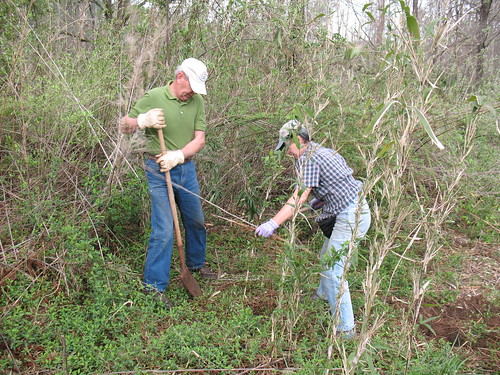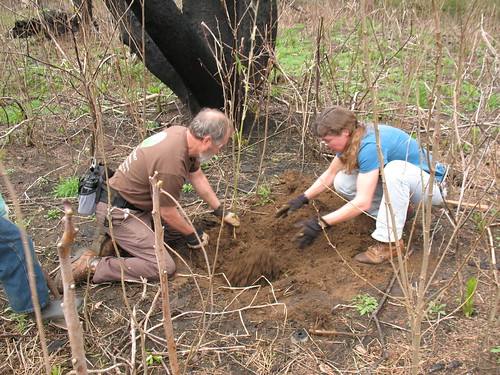
On the Sumter National Forest, the peaceful sounds of the Chattooga Wild and Scenic River can barely be heard over the clang of shovels and the squeaky axle of an old wheelbarrow.
A work crew is busy on the forest’s Andrew Pickens Ranger District but instead of building with bricks and mortar along this scenic stretch of the famous river, the work crew is restoring native vegetation along its verdant banks.
The forest is partnering with the Chattooga Conservancy and the Eastern Band of the Cherokee Nation who are interested in restoring giant cane (Arundinaria gigantea) along the Chattooga’s stream banks. The plant is excellent for controlling erosion along rivers because of its fibrous root system. The Chattooga Conservancy’s mission is to protect, promote and restore the natural ecological integrity of the Chattooga Wild and Scenic River watershed. The Cherokee Nation Indians are participating in an initiative designed to assist the tribe with restoring a traditional balance between maintaining and using natural resources known as the Revitalization of Traditional Cherokee Artisan Resources (RTCAR).
Giant cane is a native grass found in alluvial floodplains and bottomlands that once formed extensive canebrakes throughout the southeastern U.S.
Dr. David Cozzo, an ethnobotanist and RTCAR’s project director explains, “Giant cane is not an endangered species, but it is an endangered ecosystem.”

Up to 98 percent of original canebrakes are estimated to have been lost to agriculture, cattle grazing, land clearing and fire suppression. Non-native species, especially privet, also threaten existing canebrakes and hinder the cane’s expansion into new sites.
The forest and its partners are transplanting giant cane on a two-acre site that was once occupied by a dense stand of non-native golden bamboo. The bamboo formed a completely closed canopy of 10- to 25-foot stems that excluded the growth of native plants and provided little, if any, wildlife habitat. The aggressive golden bamboo was cut down and treated with herbicides in 2009. Two years later, the forest used prescribed fire to burn the dead stems to prepare the patch for restoration. Today, the volunteers are restoring the site.
For several hours, the volunteers dug up healthy cane from the surrounding area to transplant at the restoration site and the future canebrake began to take shape. At the end of the work session, volunteers had a sense of accomplishment that only comes with hard work and an important cause, never mind sore backs.
